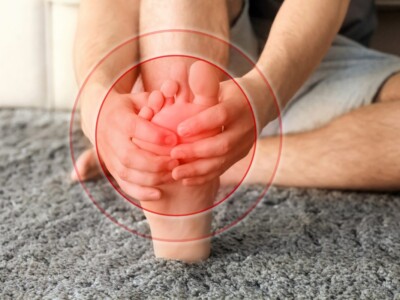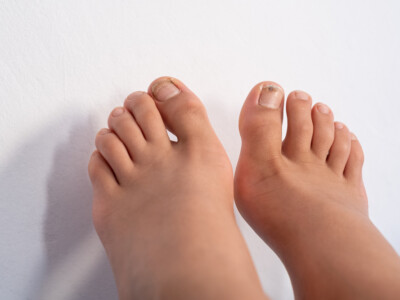Morton's Neuroma
The pain of Morton’s neuroma occurs when the nerve connecting the toe bones (metatarsal bones) becomes irritated or compressed. The exact cause of the irritation is unknown, but it may be the metatarsal bones pressing against the nerve when the gap between the bones is narrow. This causes the nerve and surrounding tissue to thicken. Some experts believe that a number of other foot problems, including flat feet, high foot arches, bunions and hammer toes, may also play a role in Morton’s neuroma.
Symptons of Morton's Neuroma
People with Morton’s neuroma usually complain of pain that can start in the ball of the foot and shoot into the affected toes. However, some people just have toe pain. There may also be burning and tingling of the toes. The symptoms are usually felt up the sides of the space between two toes. For example, if the nerve between the third and fourth long bones (metatarsals) of the right foot is affected, the symptoms will usually be felt up the right-hand side of the fourth toe and up the left-hand side of the third toe. Some people describe the pain that they feel as being like walking on a stone or a marble.
Treating Morton’s Neuroma
If you have Morton’s neuroma, shoes with a wider toe area may be recommended. You can also take painkillers to help ease the pain. Steroid/local anaesthesia injections may also be given to treat the affected nerve. If these treatments don’t work, surgery may be needed. This involves removing the thickened tissue around the nerve (and sometimes the nerve itself) to release the pressure.
When should you see your Podiatrist?
If you have continual tingling or persistent pain in your foot, you should see a podiatrist. Your podiatrist will examine your foot and ask you some questions to find out:
- About the pain and what it feels like
- When your symptoms started
- What type of shoes you usually wear
- About your work, lifestyle and sporting activities
They may also refer you to a scan, such as an ultrasound scan or magnetic resonance imaging (MRI) scan, to get a detailed image of the inside of your foot.
Book a Podiatry Appointment
OTHER CONDITIONS WE TREAT
What our clients say









